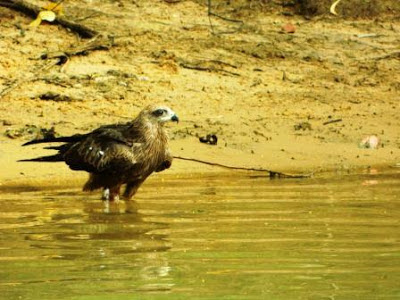Kovalam: Another Adventure of an Amateur Photographer
I have struck a deal with my DW. My HR friends will interpret DW as abbreviation of Defence Witness, and this is for them – DW means Darling Wife. Wives are never Defence Witnesses as men married or otherwise [why exclude them?] will readily testify, they may like to say that they are Public Prosecutors.
Be that as it may, let us come back to the main story. The deal with my DW is that we will have three short and one long holiday in a year. Deals, as you know, settle some issues and create new ones. And deals give rise to interpretation disputes. I am alluding to ‘Short holiday.’ The issue, as you would have guessed by now, was what makes a ‘short holiday.’ The interpretation ‘has far reaching implications’ as Nani Palkhiwala would have said. Financial implications, obviously.
But men are quick to realize that all disputes are settled by the powerful on their terms like USA does, and they give in quickly. I belong to this pragmatic species. So a four days and three nights stay in Kovalam was called a short holiday, with me nodding head in approval and the matter was quickly settled.
Soon we found ourselves parked at Hotel Leela at Kovalam. Why should anyone build a hotel where a private bungalow should have been constructed? But I realize that Mr Nair, owner of Hotel Leela, must have been persuaded by some enterprising professionals to build a hotel there to have a permanent source of income. And the owner, gullible as he is at the hands of the professionals, must have agreed.
Having arrived, the next item on the agenda was to visit some places of tourist interest. ‘Poovar,’ the Travel desk suggested as the best place to have a short visit. “They offer a boat ride for two hours. It has an estuary.” He said.
“Did you say ‘estuary’?” I asked.
“Yes estuary.” He said in the same way my English teacher introduced a new word to us with a condescending look with ‘oh-don’t-you-know-such-simple-word’ written all over his face.
“What’s that? Estuary?” I asked.
Out came my smart phone. I discovered that “Estuaries form a transition zone between river environments and maritime environments and are subject to both marine influences, such as tides, waves, and the influx of saline water; and riverine influences, such as flows of fresh water and sediment. The inflows of both sea water and fresh water provide high levels of nutrients in both the water column and sediment, making estuaries among the most productive natural habitats in the world.” Google told me so through Wikipedia.
The Poovar estuary was very special they told me. A lake, a river, back waters and sea meet there, making it a unique location in the world. I was speechless. We can write a sequel to Nehru’s Discovery of India, but more about that some other day.
The boatman was a friendly person. “Photography?” He asked looking at my camera. “There are a lot of birds here.” That cheered me up. You don’t expect a boatman to give you a motivational speech, but this man was different.
“And crocodiles?” I asked giving my DW a meaningful glance but she remained still and unmoved like a croc. The motorboat started. We moved on.
“There! Look, look! Kingfisher!!” He said. By the time I took my camera out the little birdie had gone miles away. And then again, “Look, look! Water Crow!!” This one took a nose dive and vanished in water.
I remembered the story of Arjun; he could see only the eye of a bird. I can tell you from personal experience that Dronacharya must have made a figure of bird out of clay. There is no way any bird rightly placed under Class as Aves would have stayed in its place till the famous discussion between Guru and Shishya was completed.
Let us get back to the main story. Now my DW joined with the boatman in identifying birds and saying ‘Look, look, there!’ I could not see one. The “situation was turning ‘ugly’” to use favourite expression of lawyers in the Labour Courts.
There are things a good photographer just cannot tolerate. Not being able to see an object is one such thing. It wakes him up, he “raises his antenna” if I may use the modern day alternative for putting oneself on high alert. Right, that’s the word I was looking for.
That’s the point, High Alert. You have to be on H.A. if you want to capture birds in you r camera. They fly away. They camouflage themselves. They nosedive in to water.
The trick lies in spotting them before they spot you! A quick learner that I am, as my DW says, I managed to take some photographs. Here are they:














Lovely pics Vivek kaka!!!!
I really like following your blog as the articles are so simple to read and follow. Excellent work keep up the good work. Thanks.
Amazing pics and article. The first one is a kite, the second a pond heron, third is a kingfisher, fourth cormorant which we called pankawla in Marathi.Am not able to identify the next one. The white one is an egret and the last one is the majestic brahminy kite. You have captured it in its beauty.